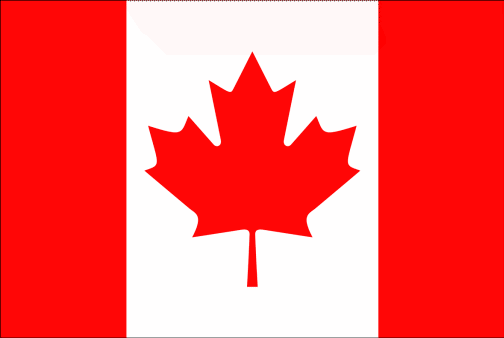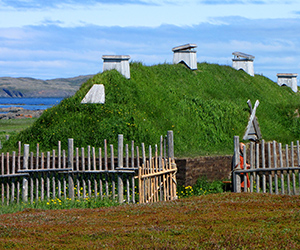CANADA HISTORY
The Flag

The Great Canadian Flag Debate of the 1960s was one of the most emotional and symbolic issues during Lester Pearson's tenure as Prime Minister. At its core, the debate was about more than just a new national flag—it represented the evolving identity of Canada and the country’s effort to assert its independence from Britain while embracing its distinctiveness as a bilingual, multicultural nation.
The Preceding Context: Symbols of a Changing Canada
Before the flag debate erupted, Canada’s official national flag had been the Union Jack, symbolizing its colonial past and its status as part of the British Empire. However, Canada often used the Red Ensign, which featured the Union Jack in the upper left corner with the Canadian coat of arms on the right. While the Red Ensign had become a symbol of Canada’s participation in the World Wars, it still prominently displayed Britain’s influence. Over time, as Canada evolved politically and socially, its citizens and political leaders began to feel the need for a flag that reflected Canada's own identity, separate from its colonial heritage.
The First World War had stirred a new sense of Canadian nationalism. The country’s military contributions, particularly at battles like Vimy Ridge, left a deep imprint on the national consciousness, fostering pride in Canada as an emerging world power. With this newfound sense of national identity, Canadian leaders began to look for symbols that could represent Canada’s distinct character. In 1925, Prime Minister Mackenzie King introduced the idea of creating a uniquely Canadian flag. A Parliamentary Committee was formed to explore potential designs, but it struggled to reach a consensus due to the persistent divide over whether British symbols, such as the Union Jack, should be part of the new flag. Ultimately, no decision was reached, and the issue was shelved for the time being.
Renewed Debate after World War II
The Second World War reignited the debate, as Canada once again proved its strength on the global stage. Canada had transitioned from a British dominion to a country with increasing autonomy and influence, particularly after the Statute of Westminster in 1931, which granted it legislative independence from Britain. Yet, even as Canada's sovereignty grew, its flag remained a relic of its colonial past.
After the war, there was renewed interest in adopting a distinct national flag, especially as the old symbols, including the Union Jack, no longer seemed to represent Canada’s diversity and evolving identity. However, once again, the debate fractured along cultural lines. English Canadians, who felt closer to Britain, generally supported keeping the Union Jack in the flag, while French Canadians, particularly in Quebec, were vehemently opposed to it, seeing it as a symbol of British colonialism. Despite ongoing efforts in Parliament, no resolution was reached during the post-war period.
Lester Pearson and the Drive for a New Flag
In 1963, Lester Pearson became Prime Minister, and he made it one of his early priorities to settle the flag issue once and for all. Pearson was motivated by the desire to strengthen Canadian nationalism and unity, particularly as tensions between English and French Canadians were intensifying. The rise of Quebec nationalism and the growing assertion of French-Canadian identity made the continued use of British symbols increasingly untenable. Pearson also believed that a uniquely Canadian flag would foster unity at home and distinguish Canada on the international stage, particularly as the country emerged as a key peacekeeping nation in global affairs.
Pearson himself was in favor of a flag that featured no British symbols. His preferred design was based on the Maple Leaf, a long-standing symbol of Canada dating back to the early colonial period, but he faced strong opposition from John Diefenbaker, the leader of the Progressive Conservatives. Diefenbaker argued that a new flag should reflect Canada’s bicultural heritage, incorporating symbols that represented both its French and English roots. He proposed a flag that included the Union Jack and the Fleur-de-lis, the symbol of French heritage, as a way to acknowledge the contributions of both cultures.
The Debate Intensifies
The flag debate soon became a deeply emotional and divisive issue in Canadian politics. For many, the flag was not just a symbol, but a representation of the country’s very identity. The debate sparked heated exchanges in Parliament, with Diefenbaker leading a passionate defense of a flag that included symbols of both Canada’s British and French heritage, while Pearson pushed for a simpler, distinctly Canadian flag. The New Democratic Party (NDP), under Tommy Douglas, supported Pearson’s vision of a maple leaf flag, emphasizing the need for a fresh, modern symbol.
In the summer of 1964, Pearson appointed John Matheson, a Liberal Member of Parliament, to head a committee tasked with creating a new flag design. After months of discussions, Matheson’s committee proposed the now-familiar design: two red bars on either side of a white field with a red maple leaf in the center. This design was chosen for its simplicity and inclusivity, as the maple leaf had long been a symbol associated with Canadian unity and nature. The flag’s colors, red and white, were already recognized as Canada’s national colors, having been officially designated by King George V in 1921.
Despite the committee’s efforts, the debate dragged on, with nationalistic sentiments flaring on both sides. Diefenbaker and his Conservative colleagues insisted that the flag should include a Union Jack to honor Canada’s British heritage. Pearson and the Liberals, on the other hand, believed that Canada needed to move forward with a modern, unifying symbol that represented the country as it was in the 1960s—independent, diverse, and distinct from Britain.
Resolution and the Unveiling of the Canadian Flag
The debate finally came to a head in December 1964, when a vote was held in Parliament. The vote was decisive, with 163 Liberals supporting the new maple leaf flag and 73 Conservatives voting against it. On February 15, 1965, the new flag was officially raised for the first time at Parliament Hill in Ottawa, with Pearson presiding over the ceremony.
The adoption of the Maple Leaf Flag marked a turning point in Canadian history. It symbolized Canada’s growing independence and its departure from its colonial past. For many, the new flag represented a more inclusive vision of Canada, one that was not tied to the British monarchy or its imperial heritage. The flag quickly became a powerful symbol of Canadian national identity and unity, used in both domestic and international settings to represent the country’s values of peace, diversity, and multiculturalism.
Significance and Legacy
The Canadian flag debate was about more than just the design of a national symbol; it was a reflection of the broader political and cultural changes happening in the country at the time. The 1960s was a period of growing nationalism, as Canada sought to assert itself on the global stage and redefine its identity apart from Britain. The flag, with its simple yet powerful maple leaf design, became a symbol of Canada’s independence and pride.
Domestically, the adoption of the maple leaf flag was crucial for fostering a sense of unity, particularly as Quebec nationalism was gaining momentum. The removal of the Union Jack was seen by many French Canadians as a step toward greater recognition of Francophone culture and a rejection of Canada’s colonial past. At the same time, the maple leaf was a symbol that could resonate with all Canadians, regardless of their ethnic or cultural backgrounds.
Internationally, the new flag helped Canada present itself as a modern, independent nation. It became an important symbol during Canada’s peacekeeping missions, diplomatic efforts, and participation in global events like the Expo 67 and the Montreal Olympics in 1976.
The Great Canadian Flag Debate was a defining moment in the country’s history, as it solidified Canada’s identity as a bilingual, multicultural, and sovereign nation. The maple leaf flag remains one of the most recognizable symbols of Canada today, embodying the country's values, diversity, and its place in the global community. The debate itself is a reminder of the complexities of nation-building and the importance of symbols in shaping a collective identity.

Cite Article : www.canadahistory.com/sections/documents




